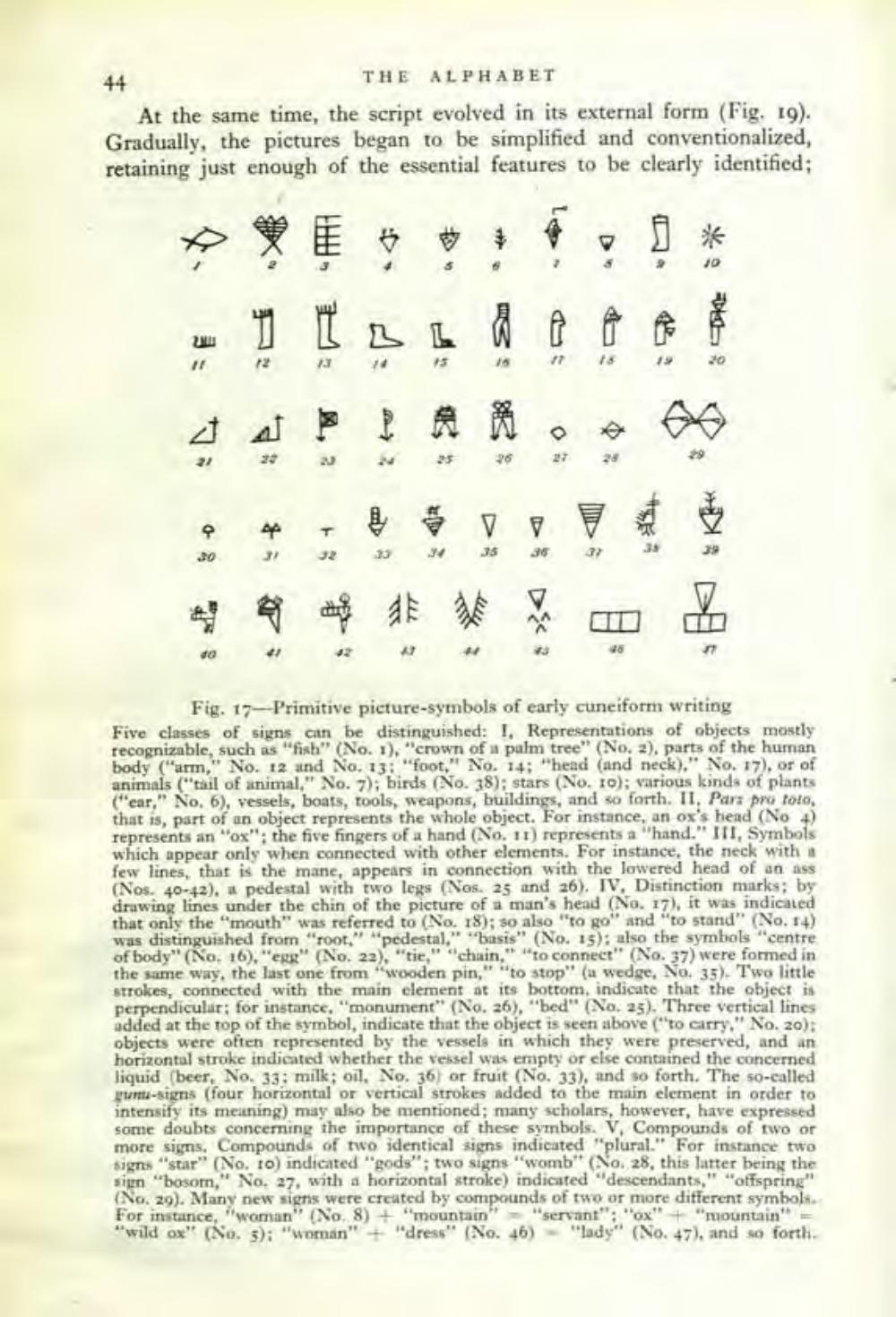________________
44
THE ALPHABET At the same time, the script evolved in its external form (Fig. 19). Gradually, the pictures began to be simplified and conventionalized, retaining just enough of the essential features to be clearly identified;
Fig. 17-Primitive picture-symbols of early cuneiform writing Five classes of signs can be distinguished: I, Representations of objects mostly recognizable, such as "fish" (No. 1). "crown of a palm tree" (No. 2), parts of the human body ("arm," No. 12 and No. 13: "foot," No. 14; "head (and neck)," No. 17), or of animals ("tail of animal," No. 7); birds No. 38); stars (No. 10); various kinds of plants ("ear," No. 6), vessels, boats, tools, weapons, buildings, and so forth. II. Pars pro toto that is part of an object represents the whole object. For instance, an ox's head (No 4) represents an "ox": the five fingers of a hand (No. 11) represents a "hand." III, Symbols which appear only when connected with other elements. For instance, the neck with a few lines, that is the mane, appears in connection with the lowered head of an ass (Nos. 40-42), a pedestal with two legs (Nos. 25 and 26). IV, Distinction marks; by drawing lines under the chin of the picture of a man's head (No. 17), it was indicated that only the mouth" was referred to (No. 18); so also "to go" and "to stand" (No. 14) was distinguished from "root." pedestal," "basis" (No. 15); also the symbols centre of body" (No. 16), "epr" (No. 22). "tie," chain," "to connect" (No. 37) were formed in the same way, the last one from wooden pin," "to stop" (a wedge, No. 35). Two little strokes, connected with the main element at its bottom, indicate that the object is perpendicular; for instance, monument" (No. 26), "bed" (No. 23). Three vertical lines added at the top of the symbol, indicate that the object is seen above ("to carry." No. 20) objects were often represented by the vessels in which they were preserved, and an horizontal stroke indicated whether the vessel was empty or else contained the concerned liquid (beer, No. 33: milk: oil, No. 36) or fruit (No. 33), and so forth. The so-called Puma-signs (four horizontal or vertical strokes added to the main element in order to intensify its meaning) may also be mentioned; many scholars, however, have expressed some doubts concerning the importance of these symbols. V, Compounds of two or more signs, Compounds of two identical signs indicated "plural." For instance two signs "star" (No, to) indicated "gods"; two signs "womb (No. 28, this latter being the sign "bosom," No. 27, with a horizontal stroke) indicated "descendants," "offspring" No. 29). Many new signs were created by compounds of two or more different symbol For instance, woman" (No. 8) + "mountain" - "servant": "ox" + "ruountain" = "wild ox" (No. 5); "woman" + "dress" (No. 46) - "Lady" (No. 47), and so forth.




